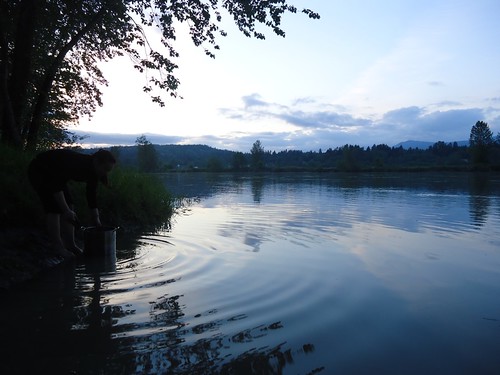
“People who hear about the types of trips we take with young people invariably have two responses,” I told the class just over a week ago. “They either say, ‘You’re crazy,’ or ‘Wow! How lucky are you to have such a job?'”
I understand each of these responses.
Maybe we are a little crazy: we leave our own lives, families and friends for days at a time to immerse ourselves in the frenetic energy of adolescence, to keep in tow the patience to teach and see our endeavors large and small through to their conclusions. All the while, we know in the back of our minds (and occasionally the front) that the calamity that can find us out of doors can range from the frivolous to the total.
It’s true that there are a million reasons to keep learning indoors, and to not take these opportunities, given the potential costs and risks. But there are ample amounts of good fortune that accompany these risks and the investment of our free-time. There are gains to be made in connecting with our environment, as well as with one another, that are sorely worth pursuing in educating today’s young people.
Gregory Bateson describes these learning opportunities as “breaches in the contextual structure,” whereby individuals gain an understanding of the process involved in implementing “corrective change in the system of sets of alternatives from which choice is made.”
This sort of “third order” thinking is driven by a confrontation with “systemic contradictions in experience” (this is taken from University of Virginia prof Eric Bredo); to the outdoor educator, this double bind is represented by the necessity of learning to provide both the freedom to explore, as well as the structure and guidance that creates safe opportunities for growth.
Gardner Campbell points out that learning in this capacity puts participants – teachers and students and parents alike – to vulnerability. “It puts the self at risk,” he says. “The questions become explosive,” and “involve “the kinds of risks that learners, at their best, will be willing to take.”
In the outdoor setting, the potential for transcendant learning meets the spectre of negative possibility, that we might meet the very worst.
And so we find ourselves on the fourth morning of the Adventure Trip talking about trust, and the fact that our parent community trusts us to take their children into these experiences, onto the Fraser River in Voyageur canoes, into the woods, and onto the local highways on our bicycles because there is value in going out there. The value that we see as educators in providing students the freedom to learn and apply their skills in authentic outdoor settings is accompanied by the risks and vulnerability we assume in relying on no small amount of trust that the students who are in our care will behave responsibly while engaged in these events.
However, in this setting, as Gardner Campbell again points out, “All the bets are off. Even the bets about the bets being off.” And so it came to be that on Monday morning we were having the following conversation:
“There has been a breakdown in the trust between you and us,” we told the class just before breakfast. “And between yourselves and one another.”
“We have to go home.”
The first of the parent drivers were arriving and waited in their cars while the initial shockwave unfurled among their children. Tears were shed and Individuals sat with pancakes on camp plates in their laps while others paced or leaned against their parents’ cars and picnic tables. Where traditionally the Adventure Trip ends in similar tears and shuddering embraces – a mix of celebration and mourning at the passing of the precious cultivating in TALONS’ two-year cycles, here the class parted shocked at the sudden passing of the next two days’ potential.
Paul Tosey talkeds about Bateson’s systemic change as a confrontation with “the significance of metaphor at the root of perception, and the profound potential for learning should such metaphors change.” In a certain light, the crisis and the opportunity presented here each revolve around individual connections to (and interpretations of) the group’s collective mythology, and the growing need for current and future participants to renovate and write a new narrative.
“The group feels broken,” a student told me Monday morning before leaving, to which I said that the events and actions expressed on the trip were “the symptoms, not the break. Whatever has been broken was that way before we came on the trip.”
In the coming days and weeks we will begin to undertake the processes of seeking out the root causes of these breaks, and do what can be done to move forward in creating new symbols and understandings of just what it is our shared experience has meant, and will mean into the future.
It is after all, like everything else, an opportunity for learning.